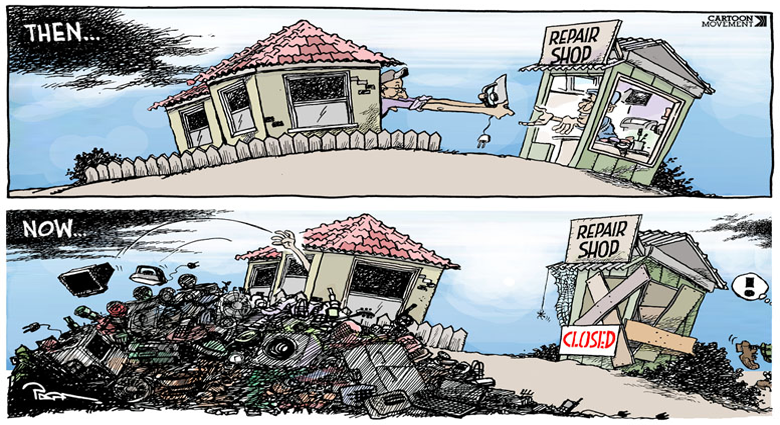Ideas come from information and understanding -- the deeper you understand a situation, the more ideas you'll get.
There are a lot of people paying attention to and thinking hard about issues related to recycling.
Take time to search and read until you have discovered at least 7 things you didn't know about the situation.
Dig for insights and ideas that give you an "aha! ... I didn't know that!" moment.
Whatever impresses you, may well be useful in impacting others.
There are plenty of topics you can search on and learn from:
Nature, ecology, consumerism, waste, stewardship, pollution, global warming, landfills, environmentalism, monocultures, biodiversity, sustainability, deforestation...This UK/Guardian article highlights how western culture's habits (and packaging) have impacted shores far from home.
Included are links to sites, organizations and studies that work to address the problem -- explore this for ideas beyond what you think you know.
Why isn't more waste recycled? Interview with the CEO of TerraCycle.
"America's recycling is actually declining."The Reign of Recycling NYTimes
"...virtually all the greenhouse benefits — more than 90 percent — come from just a few materials: paper, cardboard and metals like the aluminum in soda cans. That’s because recycling one ton of metal or paper saves about three tons of carbon dioxide"Consumerism, Mass Extinction and our Throwaway Society theArtOf.com
https://www.theartof.com/assets/images/articles/How-To-Manufacture-Desire-Web-Optimised-v2.PNGEffects of Consumerism globalIssues.org
"...our consumption patterns are so much a part of our lives that to change them would require a massive cultural overhaul, not to mention severe economic dislocation."
Be practical and accountable:
What can I do?
...not What can they do?(or Think Globally; Act Locally )

